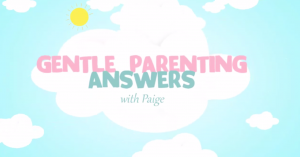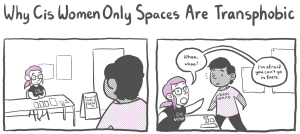
A young adult with a serious expression gestures with their hands while speaking to a therapist.
When a doctor prescribes you a new medication, they’re supposed to tell you exactly how, when, and in what amount to take it. They tell you about potential side effects and what the medication is supposed to do for you. They tell you what to do if you feel worse or it’s not helping.
And when you pick up your prescription at the pharmacy, it comes with a bunch of small text reminding you of all of that. “Do you have any questions about your prescription?” the pharmacist asks.
Unfortunately, therapy rarely comes with that sort of user guide. Some therapists are better than others at making sure that you get as much as possible out of therapy. Others assume that you already know what you want and how therapy is supposed to work.
But given how stigmatized mental illness still is, it’s not surprising that most people don’t know a whole lot about the process of therapy, either. Movies and television usually show us confrontational, sarcastic therapists who openly challenge or even insult their clients.
If that doesn’t put you off of pursuing therapy altogether, it still doesn’t give you the best idea of how it works.
I’ve been through therapy both as a client and as a therapist. Before I trained to be a therapist, I had no idea how to make sure that I actually benefited from therapy as much as I could.
The therapists I had were very non-directive, which means they basically let me babble on about whatever was on my mind. While that can be very helpful for some people, what I think I needed was to set goals and be clearer with my therapist about what I needed – and didn’t need – from them.
Here’s what I’ve learned about getting the most out of therapy. Not all of these suggestions may be helpful or accessible for you – everyone’s experience of mental illness and therapy is different. But if you’ve been feeling stuck in your own treatment, or you’re considering starting, these suggestions might help.
1. Show Up
It sounds silly when put that way, but some people end up not getting much out of therapy because they just don’t show up often enough.
Obviously things come up and everyone will miss sessions occasionally, but some folks end up missing most of their appointments – and they’re probably not getting much use out of the ones they do keep.
Ideally, try to go to therapy weekly or biweekly.
Any less often than that, and you’ll spend your entire hour just rehashing what’s happened in your life over the past month or two. (An exception is people who have already done most of the work of therapy and are now just wanting “maintenance” sessions to make sure that they’re keeping up the progress they’ve made.)
If you’re having trouble fitting therapy into your schedule, talk to your therapist about it. They may have lots of suggestions or ways that they can accommodate you, such as phone or Skype sessions, shorter sessions, or a different time slot.
2. Let Your Therapist Know How to Communicate Effectively with You
Do you prefer to schedule sessions by phone, e-mail, or text message? Should your therapist use a particular nickname or set of pronouns to refer to you? If you’re going to be discussing issues of identity, how do you want your therapist to refer to your gender, sexual orientation, ethnicity, religious beliefs, or other identities?
Do you shut down when your therapist begins a question with the word “Why?” Is it considered inappropriate in your culture to start “talking shop” before exchanging a few lines of small talk? Would you rather skip all the small talk and get to the point?
Does direct eye contact make you uncomfortable? Do you need your therapist to speak louder, softer, or slower?
These are all things you can discuss with your therapist if they’re important to you.
For instance, one thing that makes me shut down immediately in therapy (or really in any interaction) is if I sense that someone is being condescending towards me. Even the best therapists unfortunately fall into this trap sometimes. I wish I’d been able to articulate this with my past therapists and told them that I needed them to speak to me like we’re equals.
But I didn’t realize I was “allowed” to do that – and so the therapy failed.
3. Speak Up If Your Therapist Does Something That Bothers You
And speaking of telling your therapist that you’re not okay with being spoken to a certain way, you have the right to set boundaries, expect those boundaries to be respected, and fire the therapist if they’re not. Even though they’re the ones with the degree, the license, and the expertise!
You’re the expert on your boundaries.
Therapists are probably better than most people at sensing others’ feelings, but they are not mind-readers. When I wrote about how to set boundaries with your therapist, I got a lot of pushback: “The therapist should just know what my boundaries are; I shouldn’t have to tell them.”
I understand the wish that a therapist could just know what you need, but that’s dangerous thinking in a therapeutic relationship and in any other relationship.
Yes, sometimes people can pick up on your nonverbal cues and intuit your boundaries, but this is too important and nuanced for that.
Please speak up if you can.
4. Set Goals for Therapy
What made you decide to go to therapy? What are you hoping to get out of it? These are probably questions that your therapist will ask early on, and it helps to have answers for them.
If you don’t know right away, that’s okay. Sometimes what sends people to therapy is a vague sense that things are wrong, and at first they don’t know exactly what. In therapy, almost any answer is better than “I don’t know,” so if all you’ve got is “a vague sense that things are wrong,” tell your therapist that.
If you can, though, setting specific goals increases the likelihood that you’re going to get to where you want to be. Specific goals can look like: “Stop drinking,” “Reduce drinking to two nights per week and no more than four drinks per night,” “Find a reason to keep living,” “Stop having panic attacks in public,” “Learn how to keep my job despite my ADHD symptoms.”
5. If It’s Not Working, Find a New Therapist
“Not working” doesn’t necessarily mean that you’ve gone a few times and you don’t feel better yet; unfortunately, it can take a while to feel better.
When therapy isn’t working, it means your therapist won’t respect your boundaries, is uninformed about your presenting issues, or can’t seem to establish a rapport with you.
If you’ve been going regularly for weeks or months and there’s still no difference, and you’ve addressed that directly with the therapist to give them the chance to try another approach, then that’s a sign that things aren’t working, too.
Sometimes you might get a bad feeling about a therapist from the very first time you meet them. It’s okay to listen to your gut and find another one right away. But if you get a bad feeling about every therapist you ever meet with, that might be something to bring up directly with them.
Therapy is hard, and mental illness is hard, and maybe your brain just isn’t letting you be okay with being in therapy right now. Try to be gentle with yourself, and let the therapist guide you through this if you can.
Some therapists are crappy therapists, but sometimes people just don’t mesh and it’s no one’s fault. Regardless, you don’t owe your therapist anything and you’re not obligated to stick around out of politeness. You don’t have to tell them why you’re leaving, although if you want to it might be helpful feedback for them.
You can just leave. It’s your health, and you deserve to be able to take care of it as well as possible.
***
While it’s ultimately your therapist’s job to guide and support you on your journey through therapy, it’s also true that the more you put into the process, the more you get out of it. There may be times when you’re not ready or able to put a lot into it, and that’s okay. That’s why these are suggestions, not rules.
In my practice as a therapist, I try to encourage my clients to set their own course – and their own boundaries. Some of them are surprised when I say that it’s okay not to answer a question I asked – they think therapists are supposed to act like nosy neighbors. Nothing could be further from the truth.
Ideally, therapy is a safe place to challenge yourself and grow. A lot of these suggestions – setting boundaries, figuring out what you want, knowing when to leave – will also be useful skills in relationships with friends, partners, and relatives. Therapy can be a way to learn and practice them.
As for myself, I’m not in therapy right now. I’m still negotiating my own feelings about what went wrong the previous times I went, and how I can make sure that it goes better next time around.
But I do know that my best and most helpful moments in therapy were the ones where I showed up – both physically and emotionally – and did my best to communicate to my therapist what I needed from them.
Next time I find myself on the other side of a therapeutic relationship, I’m going to draw on that experience and see where it takes me.
[do_widget id=’text-101′]
Miri Mogilevsky is a Contributing Writer for Everyday Feminism and a recently graduated with a Masters in Social Work and is starting a career as a counselor in Columbus, Ohio. She loves reading, writing, and learning about psychology, social justice, and sexuality, and is working on her cat photography skills. Miri writes a blog called Brute Reason, rants on Tumblr, and occasionally even tweets @sondosia.
Search our 3000+ articles!
Read our articles about:
Our online racial justice training
Used by hundreds of universities, non-profits, and businesses.
Click to learn more




















